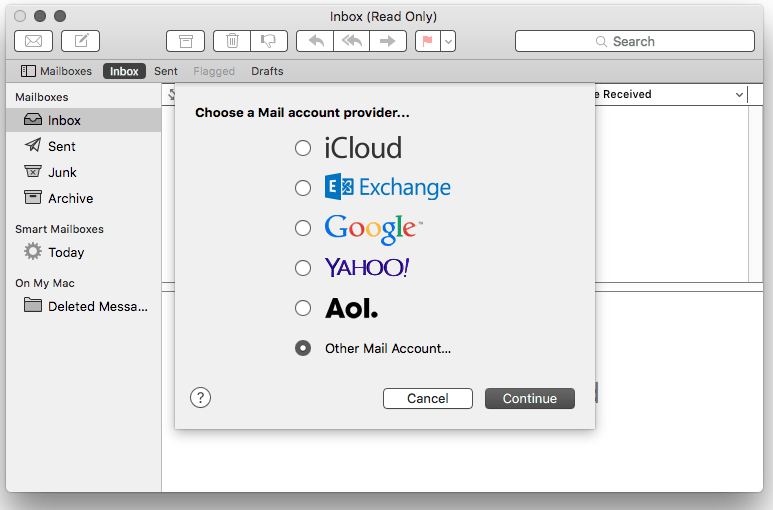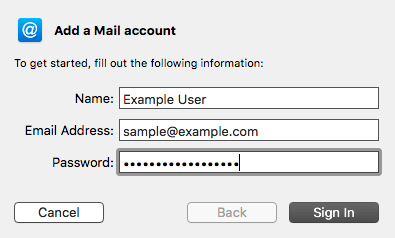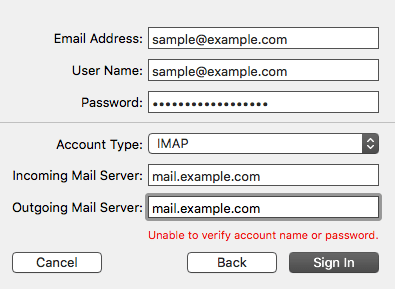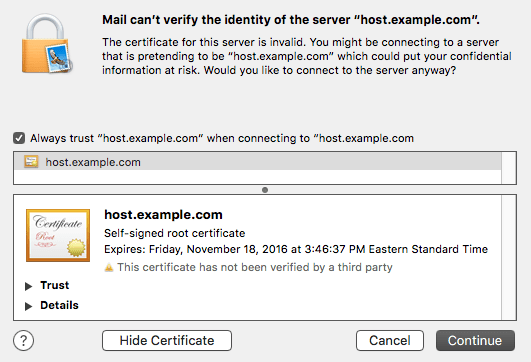Tag: Email
How To Set Up a New Email Account in Thunderbird
How to Subscribe to IMAP Folders in Thunderbird
Pre-Flight Check
- These instructions are intended specifically for setting up an email account in Mozilla Thunderbird 38.3.0 on Mac OS X 10.11.1.
- While the steps should be similar across platforms and operating systems, they may not necessarily apply to older versions of Thunderbird.
- For help with general email account settings, see How to Set up Any Email Client.
When connecting to your email server using the IMAP protocol, you have the ability to choose the specific mail folders to which you wish to subscribe.
Pre-Flight Check
- These instructions are intended specifically for setting up POP3/IMAP email on an iPhone or iPad running iOS 9.
- If these instructions don’t quite work for you, check-out our tutorial How to Set up Any Email Client.
If you’ve already set up your email account on your device and need to update the password, want to switch between non-SSL and SSL settings, or need to change the port settings, you can easily edit the account from within the Settings app.
Pre-Flight Check
- These instructions are intended specifically for setting up a new email account on Mac Mail under OS X 10.11.1 (El Capitan).
- Need instructions for an older version? Try How To Set up Email in OS X 10.5.
- For help with general email account settings, see How To Set up Any Email Client.
Step #1: Create the Account
- Launch Mail by clicking on its icon in the dock. Under the Mail menu, select Add Account.
- On the “Choose a Mail account provider” screen, select the radio button next to Other Mail Account and click the Continue button.

- On the Add a Mail Account screen, enter your name, the email address and the email account’s password.

Step #2: Account Settings
- At this point, you should see an additional popup window with a place for you to add additional settings.
- You will need to ensure that all the fields are completed:

- Email Address is the full email address you’re setting up.
- Username also is the full email address.
- Password is the email account’s password.
- Account Type will be IMAP or POP, depending on your preference. For its ability to keep email in sync across multiple devices (desktop, laptop, phones and tablets), IMAP generally is recommended.
- Incoming and Outgoing Mail Server
- If you are using non-SSL settings, both the Incoming Mail Server and Outgoing Mail Server will be your domain name: mail.yourdomainname.com (or simply yourdomainname.com).
- If you are using SSL settings, both the Incoming Mail Server and Outgoing Mail Server will need to be set to the server’s hostname (e.g., host.yourdomainname.com).
Step #3: Security Settings
- If you set up the email account with standard connection settings (mail.yourdomainname.com), or you set up the account with secure SSL settings and have an SSL certificate installed on your mail server, you can skip this section and proceed to Step 4. However, if you’re using SSL settings (host.yourdomainname.com) and your server has a self-signed (free) SSL certificate installed on the mail server, you should see a popup notification about the server certificate:

- If you receive this notification, you will need to click either the Continue button to accept the certificate and proceed, or the Show Certificate button to inspect it. Should you wish to permanently store the certificate and add it to the Keychain, you can check the Always trust box before selecting Continue. Depending on your security settings, choosing to permanently store the certificate could require you to enter your password to add it to the Keychain.

-
Note: A self-signed certificate uses the same level of encryption as a verified certificate, except that it is you who are verifying your server’s identity, rather than a third party. However, if you would prefer to use a third party verified SSL certificate to cover core services (cPanel/WHM, POP3, IMAP, SMTP and FTP) on your server, you can find instructions for ordering and installing an SSL certificate at install an SSL certificate on a Domain using cPanel, and you’ll find a guide to installing your certificate on email and other core server services at Installing Service SSLs in cPanel. Should you find that you need any assistance, please feel free to contact a Heroic Support® technician who can assist with obtaining and installing an SSL from the vendor of your choice.
Step #4: Finishing Up
- Ensure that the box next to mail is checked and then click on Done to complete the setup.
- You’re now ready to begin using your email account with mail.
Pre-Flight Check
- These instructions are intended specifically for modifying an existing email account in Mac Mail on OS X 10.11.1 (El Capitan).
- Need instructions for an older version? Try How To Set up Email in OS X 10.5.
- For help with general email account settings, see How To Set up Any Email Client.
You can edit an email account that already has been configured in Mail, for example should you decide to switch between non-SSL and SSL settings or update the password.
How to Set Up Any Email Client
Setting up email in a client such as Outlook or Mac Mail on your cPanel server for the first time can be a bit complicated, but once you know a few key pieces of information, you can get almost any email client up and running quickly.
A Closer Look at cPanel Notifications
In recent updates, cPanel has modified some of the notification settings for their control panel. As a result, you may find that the priority of certain notification types have changed and you may begin to receive notifications that you previously had not encountered. In particular, the notification options for Security Advisor changed with the release of WHM 56 on April 26, 2016.
Is the Server Down? I Can’t Log in or Connect
Are you unable to connect to your cPanel based VPS server or dedicated server to send or receive email, log into cPanel or WHM, or make an FTP or SSH connection? Are you able to view your website in your browser? If not, and the connection simply times out, it's possible that your IP address has been blocked by the dedicated server’s firewall. Typically, this is the result of too many failed logins (through cPanel, SSH, FTP, email, etc.) in too short a period of time.
Most Common Support Requests
As you might expect, most support requests on managed cPanel servers fall into a few basic categories. What you might be surprised to discover is that many common problems can be resolved by following a few simple steps.
Our Sales and Support teams are available 24 hours by phone or e-mail to assist.

